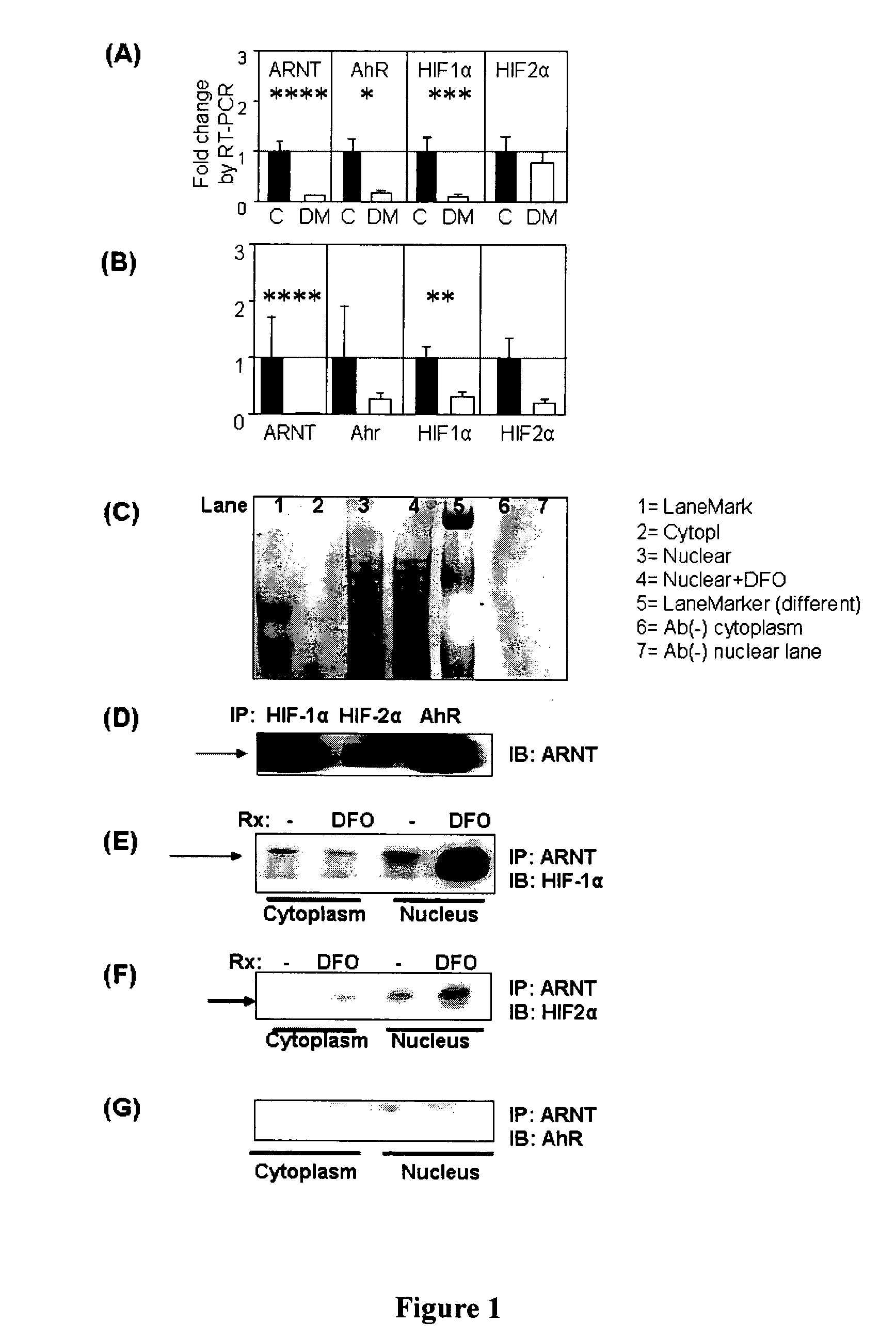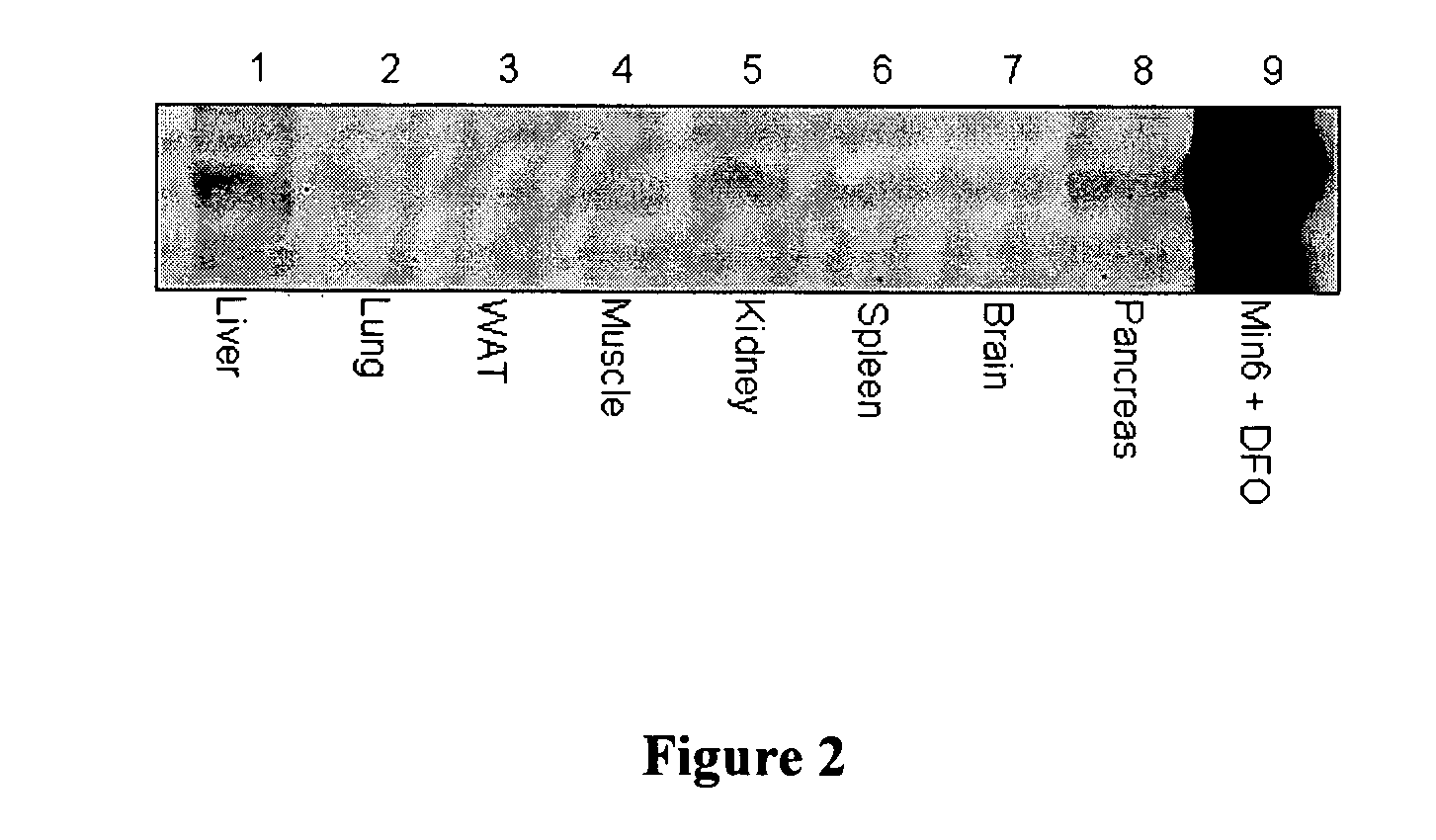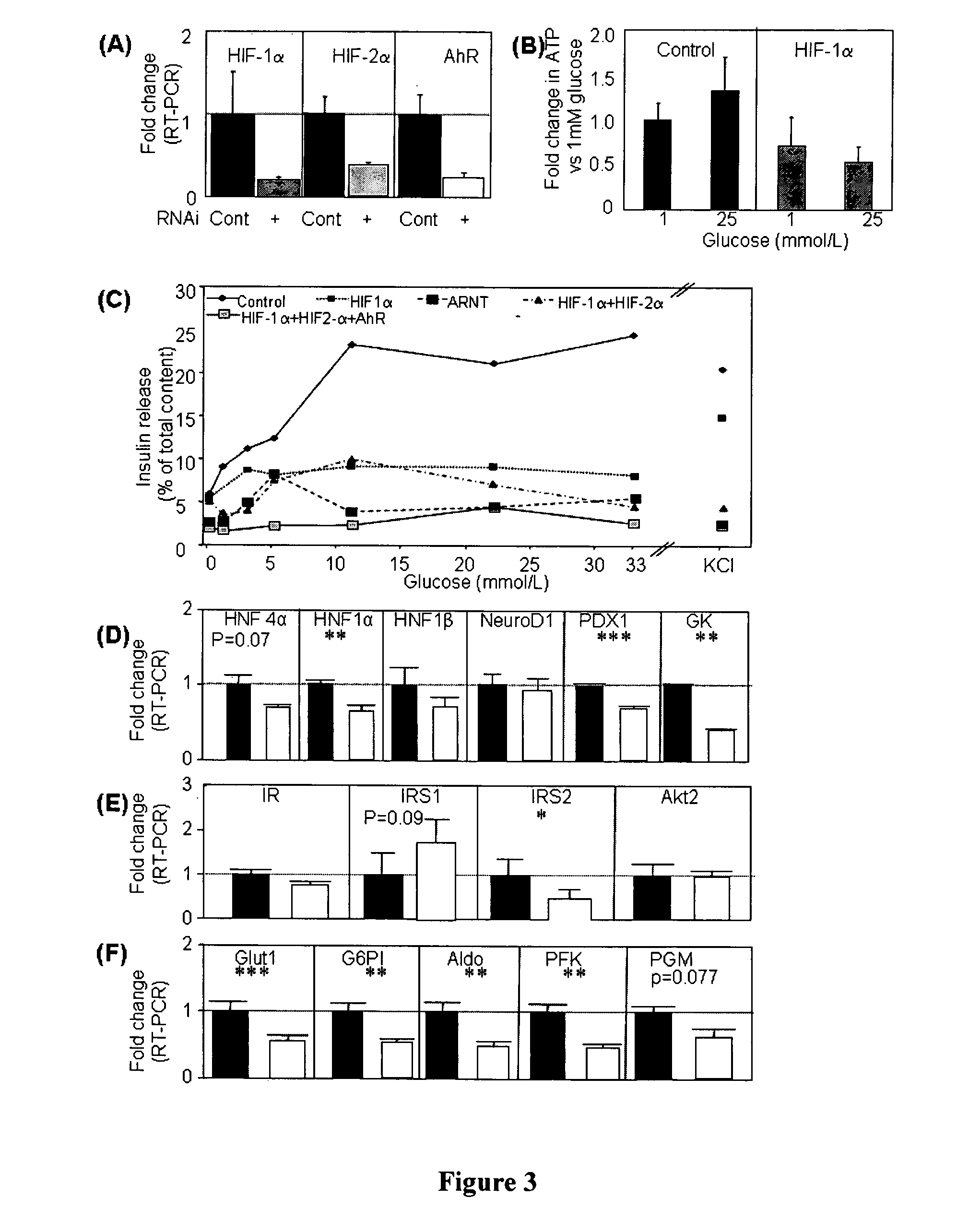Method of treating diabetes
a diabetes and diabetes technology, applied in the field of diabetes treatment, can solve the problems of insufficient susceptibility, undesirable side effects, and inability to use blockers in vivo, and achieve the effect of improving the survival rate of grafts
- Summary
- Abstract
- Description
- Claims
- Application Information
AI Technical Summary
Benefits of technology
Problems solved by technology
Method used
Image
Examples
example 1
Materials and Methods
Human Pancreatic Islets
[0118]Human pancreatic islets were purified from seven normoglycemic subjects using the modified Ricordi method (Ricordi et al., 1988) as previously described (Gunton et al., 2005). The subjects are described in (Gunton et al., 2005), and were matched for age and body-mass-index. Gene expression was measured by real-time-PCR and was performed in a two-step reaction using the Invitrogen RT-for-PCR kit. The second step was performed in a fluorescent temperature cycler (ABI-Prism 7700 Sequence Detection System, Applied Biosystems) with LightCycler-RNA Master SYBR-Green-I (Roche, Mannheim, Germany) and specific primers for each of the genes (sequences available on request). Every plate included a control gene (TATA-box binding protein / TBP) for every subject. Results were analysed by unpaired t-test.
Islet Isolation from Mice
[0119]Pancreatic islets were isolated from mice aged 9-12 weeks, as previously described (Kulkarni et al., 1999; Gunton et...
example 2
Expression of Hypoxia-Inducible Factor-1α (HIF-1α) is Decreased in Islets Isolated from People with Type 2 Diabetes
[0130]The present inventors measured HIF-1α gene expression in human islets isolated from people with normal glucose tolerance or type 2 diabetes. The islet donors have been previously described (Gunton et al., 2005). The present inventors also measured expression of other bHLH-PAS family members, aryl hydrocarbon receptor (AhR) and HIF-2α. By real-time PCR, expression of HIF-1α, HIF-2α / EPAS1 and AhR were all clearly detected in human islets (FIG. 1A), as was ARNT. HIF-1α mRNA expression was decreased by 90% in islets from people with type 2 diabetes (FIG. 1A, p<0.001). As previously reported by the inventors (Gunton et al., 2005), there was also a 90% decrease in expression of ARNT. Expression of AhR was also significantly decreased (p<0.05) and there was no significant change in expression of HIF-2α.
example 3
HIF-1α Expression is Decreased in Islets from β-Cell Specific ARNT Knockout Mice
[0131]In isolated murine islets, expression of HIF-1α, HIF-2α, AhR and ARNT mRNAs were clearly detected. Interestingly, in β-cell specific ARNT knockout mice (white bars), as in type 2 diabetes islets which had decreased ARNT, HIF-1α expression was markedly decreased (FIG. 1B), suggesting a potential role for ARNT in the transcriptional regulation of HIF-1α at the mRNA level.
PUM
| Property | Measurement | Unit |
|---|---|---|
| flow rate | aaaaa | aaaaa |
| resistance | aaaaa | aaaaa |
| diabetes-related disorder | aaaaa | aaaaa |
Abstract
Description
Claims
Application Information
 Login to View More
Login to View More - R&D Engineer
- R&D Manager
- IP Professional
- Industry Leading Data Capabilities
- Powerful AI technology
- Patent DNA Extraction
Browse by: Latest US Patents, China's latest patents, Technical Efficacy Thesaurus, Application Domain, Technology Topic, Popular Technical Reports.
© 2024 PatSnap. All rights reserved.Legal|Privacy policy|Modern Slavery Act Transparency Statement|Sitemap|About US| Contact US: help@patsnap.com










